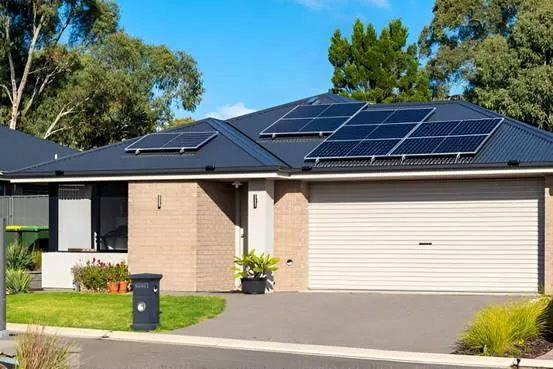
The Complete Guide to Hybrid Solar Systems for Australian Homes
Australian homeowners are increasingly seeking energy solutions that combine reliability, flexibility, and long-term savings. Hybrid solar systems deliver exactly that. By pairing solar panels with battery storage and grid connectivity, these systems ensure a consistent power supply day and night. At Ramselec Solar, we design hybrid setups that maximise energy independence while reducing electricity costs, all tailored to suit Australia’s diverse climate and household needs.
Table of Contents
What Is a Hybrid Solar System?
How Do Hybrid Solar Systems Work?
Why Are Hybrid Systems Gaining Popularity in Australia?
Key Components of a Hybrid Solar System
Things to Consider Before Installing a Hybrid System
Pros and Cons of Hybrid Solar Systems
Key Takeaways
Hybrid systems combine solar panels, batteries, and grid access
They offer energy security and cost savings
Batteries store excess energy for night-time use
Ideal for reducing reliance on the grid
What Is a Hybrid Solar System?
A hybrid solar system is essentially a grid-connected solar power system with battery storage. It works just like a standard grid-tied solar system during the day, using solar panels to generate electricity. Instead of sending all surplus power back to the grid, it stores part of that energy in a solar battery for later use, such as during the night or a blackout.
You still stay connected to the mains electricity grid, which means you have backup power if your solar and battery can’t cover your usage. It’s the best of both worlds: the reliability of grid power with the independence and savings of solar.
How Do Hybrid Solar Systems Work?
Here’s a simple breakdown of how a hybrid solar system operates:
Daytime: Solar panels generate electricity from the sun. Your home draws the power it needs, while any surplus is stored in the battery.
Evenings or Overcast Days: When solar output falls, your home draws energy from the battery.
Battery Depleted?: If the battery runs out, your system pulls power from the grid.
Feed-in Tariffs: If your battery is full and you’re still generating excess solar, it can be exported to the grid for a small credit (depending on your energy retailer).
Some advanced systems also come with smart inverters and software that help you monitor and optimise your energy use, switch between battery and grid automatically, and even integrate with EV chargers.
Why Are Hybrid Systems Gaining Popularity in Australia?
Australia ranks among the world’s leaders in rooftop solar adoption. But as energy prices rise and feed-in tariffs drop, homeowners are looking to store more of their solar energy instead of selling it back for peanuts.
Hybrid systems offer:
Greater Energy Independence: Rely less on big energy companies.
Protection Against Blackouts: Still have power during outages.
Savings on Power Bills: Use more of your energy, especially during peak tariff periods.
Environmentally Friendly: Reduce reliance on fossil fuels.
Plus, with government rebates and incentives still available in many states, hybrid systems have become more affordable than ever.
Key Components of a Hybrid Solar System
Solar Panels: Solar panel convert sunlight into DC electricity.
Hybrid Inverter: Manages power flow between solar panels, battery, home, and grid.
Battery Storage: Holds surplus solar power for future use.
Smart Energy Management System (Optional): Optimises energy use and provides real-time monitoring.
Some systems also include backup circuits to power essential appliances during a blackout, like your fridge, internet, or lighting.
Things to Consider Before Installing a Hybrid System
Before jumping in, here are a few important factors to weigh up:
1. Your Energy Usage
Understand your daily and seasonal electricity usage. A hybrid system makes the most sense for homes that use a lot of power in the evenings or early mornings when the sun isn’t shining.
2. Battery Size
Battery storage is measured in kilowatt-hours (kWh). The average Aussie home might need a 10–13 kWh battery to significantly reduce grid reliance. Too small, and you won’t have enough backup; too large, and you may not use the stored energy effectively.
3. System Cost
Hybrid systems typically cost more than standard grid-tied systems, mainly due to the battery. Expect to pay anywhere depending on the size and brand.
4. Payback Period
The return on investment depends on your usage patterns, electricity rates, and the size of your system. Most homeowners achieve a return on investment within 6–10 years.
5. Rebates and Incentives
Check what solar rebates are available in your state. The Small-scale Renewable Energy Scheme (SRES) helps reduce the upfront cost. Some states, like Victoria and South Australia, also offer additional battery rebates or no-interest loans.
Pros and Cons of Hybrid Solar Systems
Pros
Reduces electricity bills
Provides backup power during outages
Make the most of your solar energy
Future-proofs your home for electric vehicles and energy price hikes
Environmentally responsible
Cons
Higher upfront cost (mainly due to battery)
Batteries degrade over time (usually a 10–15-year lifespan)
May require ongoing maintenance or software updates
Is a Hybrid Solar System Right for You?
A hybrid solar system is ideal for households that:
Want backup power in case of blackouts
Use more energy during non-daylight hours
Are you looking for long-term energy savings?
Want to become more energy self-sufficient
It’s especially popular in areas with frequent power outages or where grid electricity is expensive, such as regional towns or the fringes of major cities.
Conclusion
Hybrid solar systems merge solar power with battery storage, delivering dependable performance, cost efficiency, and positive environmental impact. Australian households provide a smart path to energy independence while ensuring flexibility through grid connection. Ramselec Solar designs and installs hybrid systems that fit your household’s energy profile, delivering maximum efficiency and value. Ready to upgrade to a hybrid solar system? Contact us today for installation service and expert advice.
FAQs:
What’s the difference between a hybrid and an off-grid solar system?
A hybrid system stays connected to the grid, while an off-grid system operates independently.
How long do hybrid solar batteries last?
Most batteries last 10–15 years, depending on usage and maintenance.
Is it possible to install a battery with my current solar setup?
Yes. Many existing solar setups can be upgraded to a hybrid with battery integration.
Do hybrid systems work during blackouts?
Yes, if your system includes blackout protection features and sufficient stored energy.
Are government rebates available for hybrid systems?
Yes. Rebates and incentives vary by state, with Victoria offering generous battery rebates.
Is a hybrid solar system worth the investment?
For homes with high evening power demands, the long-term savings and added energy security make it a smart investment.







